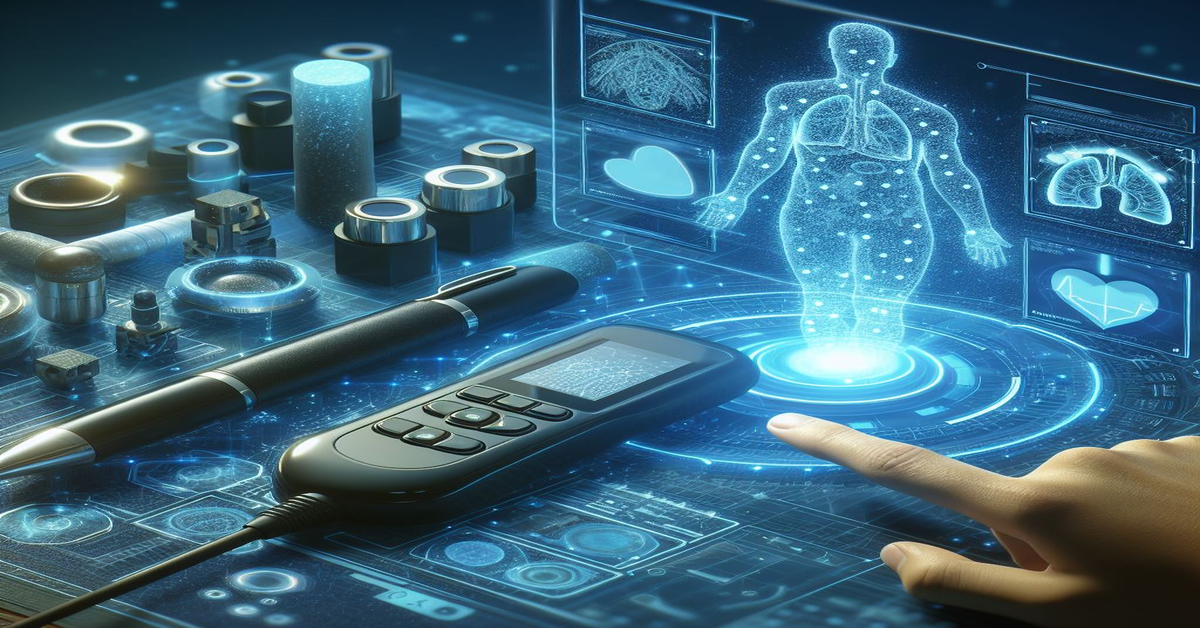
Explore the future of healthcare with AI’s innovative 10-second voice detection for rapid and efficient diabetes diagnosis.
As the healthcare landscape evolves, technology takes center stage in transforming the way we diagnose and manage medical conditions. Among the revolutionary advancements, Artificial Intelligence (AI) has emerged as a game-changer in diabetes diagnosis, offering a groundbreaking solution with its 10-second voice detection capability.
## Table of Contents
– The Role of AI in Healthcare
– 10-Second Voice Detection: A Game-Changing Technology
– Benefits for Diabetes Diagnosis
– Challenges and Considerations
– Future Implications
– Conclusion
The Role of AI in Healthcare
Artificial Intelligence has been a driving force in healthcare, bringing forth solutions that streamline processes and improve diagnostic accuracy. In diabetes management, AI’s role extends beyond traditional methods, introducing innovative approaches that prioritize efficiency and accessibility.
10-Second Voice Detection: A Game-Changing Technology
The core of this revolutionary approach lies in the ability of AI to analyze vocal patterns for diabetes detection. In a mere 10 seconds, the technology can assess subtle variations in voice characteristics associated with diabetes, providing a rapid and non-intrusive diagnostic tool.
Benefits for Diabetes Diagnosis
The advantages of AI-driven 10-second voice detection in diabetes diagnosis are manifold. Firstly, the speed of the process enables swift identification of potential cases, allowing for immediate follow-up and intervention.
Challenges and Considerations
While the potential of 10-second voice detection is immense, it’s crucial to acknowledge the challenges and considerations associated with its implementation. Privacy concerns, data security, and the need for extensive validation studies are among the key considerations that must be addressed for widespread adoption.
Future Implications
The future implications of AI’s 10-second voice detection extend beyond diabetes diagnosis. As technology continues to advance, similar approaches may emerge for the detection of other medical conditions, paving the way for a comprehensive and efficient healthcare landscape.
Conclusion
In conclusion, the marriage of AI and 10-second voice detection represents a revolutionary approach to diabetes diagnosis. By harnessing the power of vocal biomarkers, this technology offers a rapid, non-invasive, and accessible method for early detection.
Can 10-second voice detection be applied to other medical conditions?
While the focus of this technology is currently on diabetes diagnosis, the principles of vocal biomarker analysis could potentially extend to other medical conditions. However, extensive research and validation would be necessary to ensure its accuracy and reliability across a broader spectrum of health concerns.
What measures are in place to address privacy concerns related to voice data?
Privacy is a paramount concern in healthcare technology. Developers of 10-second voice detection systems must adhere to stringent data protection protocols. This includes anonymizing and securing voice data, obtaining informed consent from users, and complying with relevant privacy regulations to ensure the confidentiality and security of patient information.
How does 10-second voice detection compare to traditional diabetes diagnostic methods?
Compared to traditional methods such as blood tests, 10-second voice detection offers a quicker and non-invasive alternative. The speed of diagnosis and the ease of the process contribute to early detection and intervention, potentially improving patient outcomes. However, ongoing research is essential to establish its accuracy and reliability in diverse populations.
FAQs for “Revolutionizing Diabetes Diagnosis: AI’s Groundbreaking 10-Second Voice Detection”
Can 10-second voice detection be applied to other medical conditions?
While the focus of this technology is currently on diabetes diagnosis, the principles of vocal biomarker analysis could potentially extend to other medical conditions. However, extensive research and validation would be necessary to ensure its accuracy and reliability across a broader spectrum of health concerns.
What measures are in place to address privacy concerns related to voice data?
Privacy is a paramount concern in healthcare technology. Developers of 10-second voice detection systems must adhere to stringent data protection protocols. This includes anonymizing and securing voice data, obtaining informed consent from users, and complying with relevant privacy regulations to ensure the confidentiality and security of patient information.
How does 10-second voice detection compare to traditional diabetes diagnostic methods?
Compared to traditional methods such as blood tests, 10-second voice detection offers a quicker and non-invasive alternative. The speed of diagnosis and the ease of the process contribute to early detection and intervention, potentially improving patient outcomes. However, ongoing research is essential to establish its accuracy and reliability in diverse populations.
What are the key benefits of AI-driven 10-second voice detection in diabetes diagnosis?
The advantages are manifold. The speed of the process enables swift identification of potential cases, allowing for immediate follow-up and intervention. Moreover, the non-invasive nature of voice detection eliminates the need for traditional blood tests, offering a more comfortable experience for patients and potentially increasing compliance with regular check-ups, contributing to better overall diabetes management.
What challenges and considerations are associated with the implementation of 10-second voice detection?
While the potential of 10-second voice detection is immense, challenges such as privacy concerns, data security, and the need for extensive validation studies must be addressed for widespread adoption. Additionally, the technology may face challenges in accurately detecting diabetes in certain populations or individuals with unique vocal characteristics, necessitating ongoing research and collaboration between technology developers and healthcare professionals.
How does AI contribute to proactive and preventive healthcare strategies in diabetes management?
AI in healthcare, including diabetes management, goes beyond traditional methods by introducing innovative approaches that prioritize efficiency and accessibility. From predictive analytics to personalized treatment plans, AI empowers healthcare professionals to deliver more precise and timely interventions, marking a significant leap towards proactive and preventive healthcare strategies.
What are the future implications of AI’s 10-second voice detection in healthcare?
The future implications extend beyond diabetes diagnosis. As technology continues to advance, similar approaches may emerge for the detection of other medical conditions, paving the way for a comprehensive and efficient healthcare landscape. The integration of AI into diagnostic practices signifies a paradigm shift towards more proactive and personalized healthcare, holding the promise of improved patient outcomes and a more resilient healthcare system.













